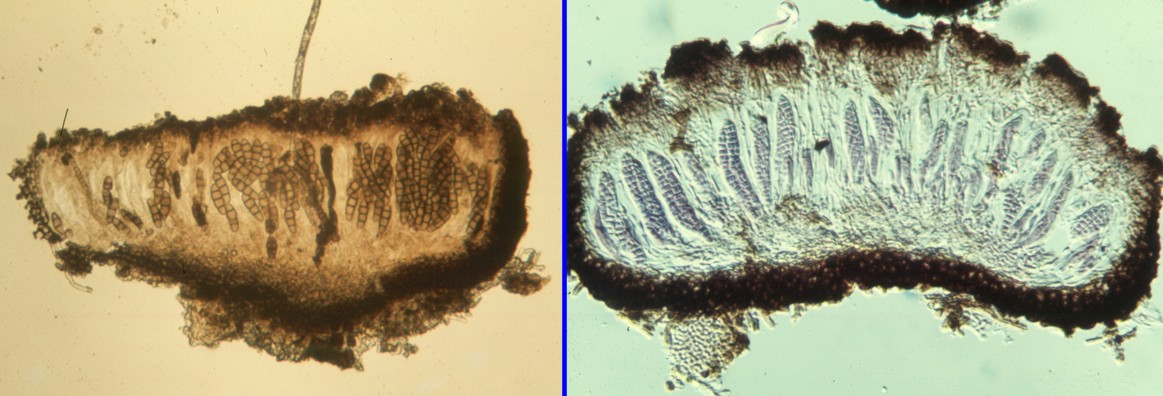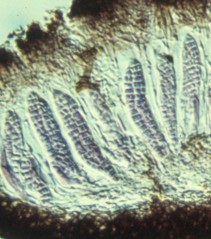Home >> Diversity and classification >> True fungi >> Dikarya >> Ascomycota >> Pyrenomycetes >> Dothideomycetes >> Patellariales
THE PATELLARIALES
Members of the Patellariales are certain to mislead you into thinking they are discomycetes because their ascomata are apothecia. They grow in very dry situations, usually on dead wood and look exactly like one of the lichen-forming Discomycetes. The fact that they are not associated with algae is your best clue that they do not belong with that group. Under the microscope they are seen to have typical bitunicate asci produced in a dense paraphysoid hamathecium.

The picture above shows apothecia of two members of the Patellariales, Rhytidhysterion and Tryblidaria. The apothecia have been prepared for the microscope by being sliced with a razor blade into thin sections. Both show the thick outer wall completely surrounding the ascomata that is beginning to disintegrate above the asci.
The elements of the paraphysoid hamathecium are highly branched at the top will become partially detached from the from the wall material. The ascospores of the Rhytidhysterion species at left, still contained within the asci, are dark brown and mostly 4-celled by means of three horizontal septa. Those of the Tryblidaria species are very pale brown and muriform, a term that means they have both horizontal and vertical septa. The enlargement below shows some of these details.
